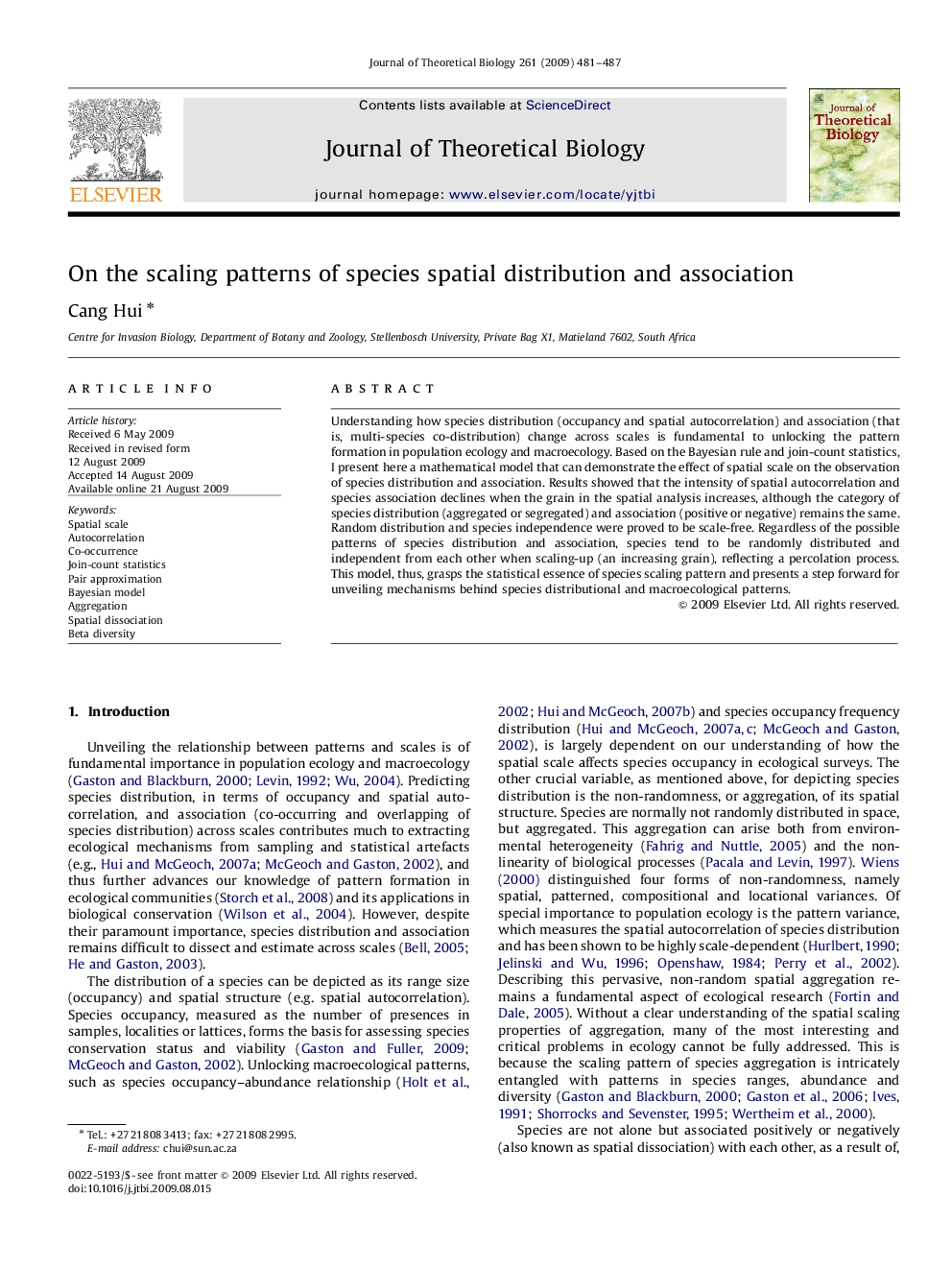| Article ID | Journal | Published Year | Pages | File Type |
|---|---|---|---|---|
| 4497688 | Journal of Theoretical Biology | 2009 | 7 Pages |
Understanding how species distribution (occupancy and spatial autocorrelation) and association (that is, multi-species co-distribution) change across scales is fundamental to unlocking the pattern formation in population ecology and macroecology. Based on the Bayesian rule and join-count statistics, I present here a mathematical model that can demonstrate the effect of spatial scale on the observation of species distribution and association. Results showed that the intensity of spatial autocorrelation and species association declines when the grain in the spatial analysis increases, although the category of species distribution (aggregated or segregated) and association (positive or negative) remains the same. Random distribution and species independence were proved to be scale-free. Regardless of the possible patterns of species distribution and association, species tend to be randomly distributed and independent from each other when scaling-up (an increasing grain), reflecting a percolation process. This model, thus, grasps the statistical essence of species scaling pattern and presents a step forward for unveiling mechanisms behind species distributional and macroecological patterns.
